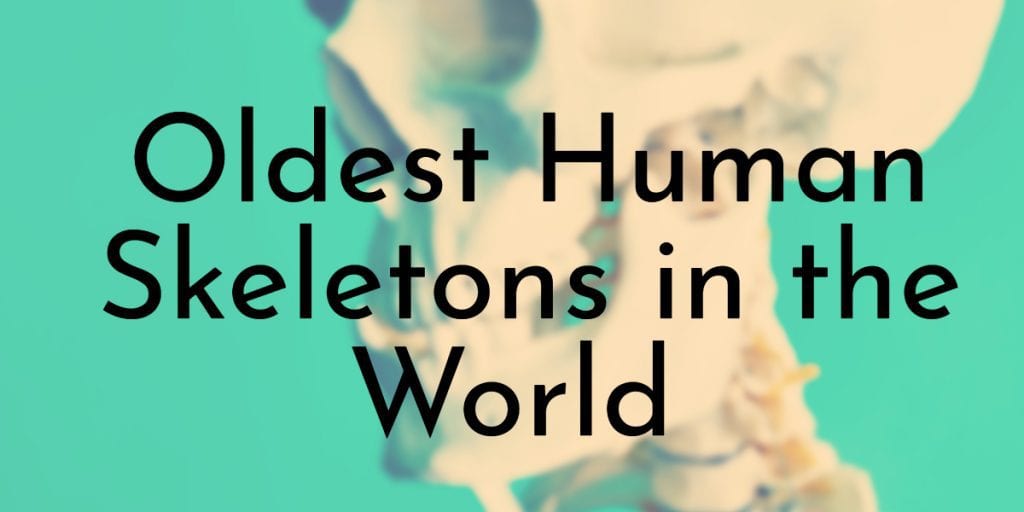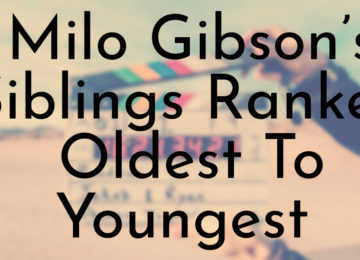While many hominid or human ancestor skeletons have been discovered that date back millions of years, the oldest modern human (Homo sapiens) skeletons are significantly more recent. Research suggests that Homo sapiens only appeared about 200,000 to 300,000 years ago. Some of the earliest human remains date back to this time, while the oldest nearly complete skeletons are only about 100,000 years old. Almost every skeleton on this list is almost complete with just a few bones missing.
10. Anzick Boy
Age: c.12,000 to 13,000 years old
Location: Anzick site, Wilsall, Montana, USA
Gender: Infant male
Year Discovered: 1968
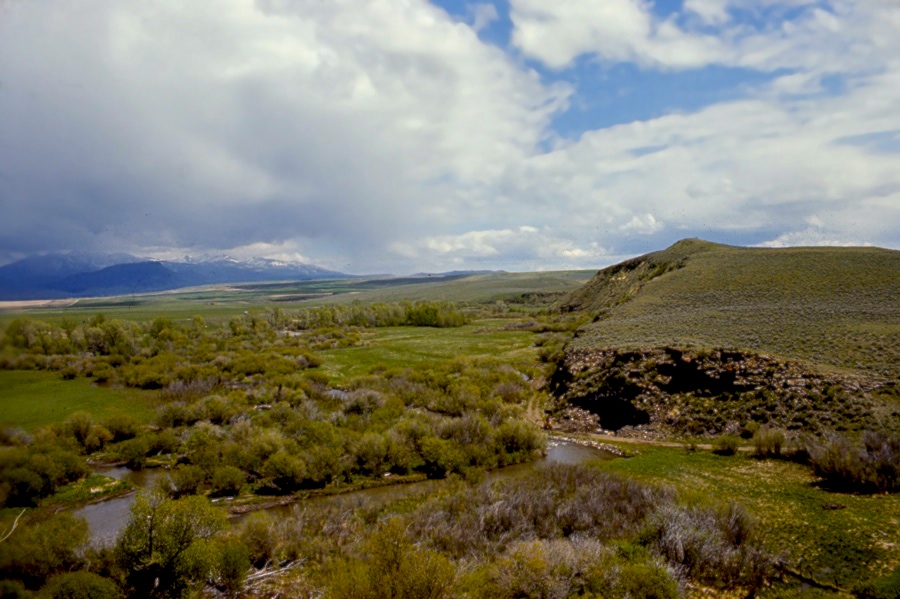
The skeleton of the Anzick Boy, first discovered in 1968 is perhaps one of the most important human remains ever discovered. The child, who was about two years old, was found in cave near Wilsall, Montana in what is the oldest burial site in North America. The Anzick Boy belonged to the Clovis culture and is the only known human who has been discovered from this culture. The Clovis culture is primarily known through the numerous tools and other artifacts that have been uncovered in North America.
Before returning the remains of the Anzick Boy to the indigenous tribes of the area, his DNA was sequenced. The Clovis culture is the first ancient Native American genome to be fully sequenced. The Anzick Boy’s DNA showed that he had genomes similar to the people of ancient Siberia and the ancestors of East Asians. Additionally, the Anzick Boy shares a common ancestry with about 52 Native American populations living in South America and Canada.
Did You Know?
Like many of the skeletons on this list, the Anzick Boy appears to have been ceremonially buried. His body was found with 125 artifacts, including spear points and elk antlers, and his body was sprinkled with red ochre.
9. Naia
Age: c.12,000 to 13,000 years old
Location: Sac Atun cave system, Yucatán, Mexico
Gender: Teenage female
Year Discovered: 2007
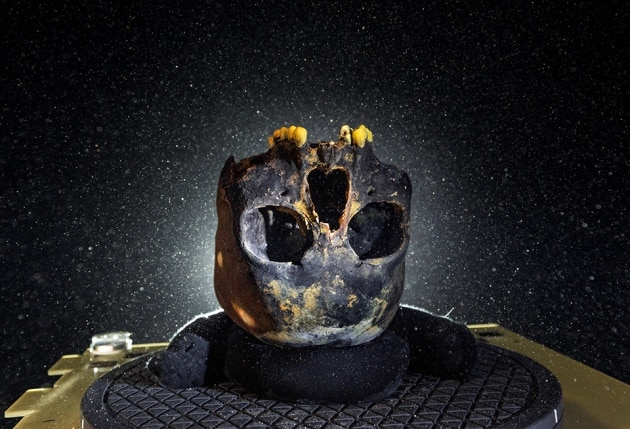
In 2007, a team of archaeologists led by James Chatters discovered the skeleton of a teenaged girl who lived between 12,000 to 13,000 years ago in what is now Yucatán, Mexico. The skeleton, nicknamed Naia, is the most complete Ice Age skeleton yet uncovered in the Americas.
Naia’s skeleton sheds some insight over the early peoples of the Americas. She has features of other early Americans, which look different from modern Native Americans, but also shares some DNA sequences with modern Native Americans. It is believed that Naia could have been genetic great-aunt to indigenous people currently found in the Americas.
Did You Know?
Newer research into Naia shows that she was a young mother, who probably had just given birth before she fell into the cave where her remains were found and died.
8. Bichon Man
Age: c.14,000 years old
Location: Grotte du Bichon, Swiss Jura Mountains
Gender: Adult male
Year Discovered: 1956
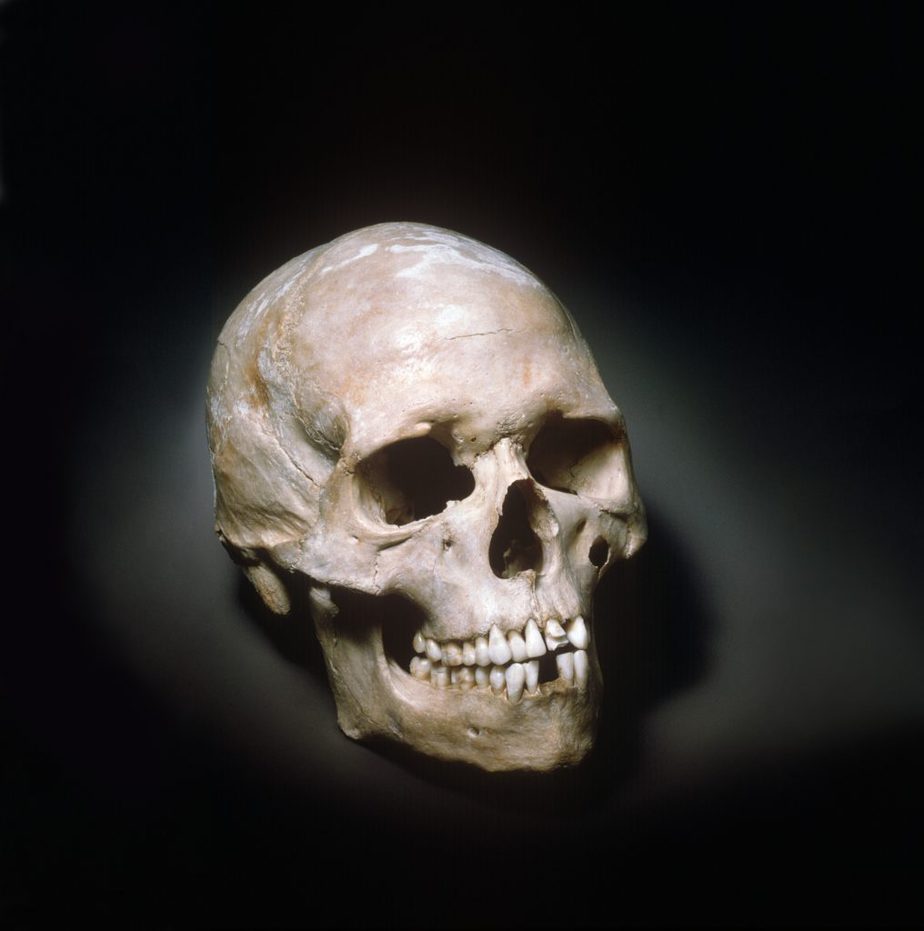
The skeleton dubbed the Bichon Man, was discovered in 1956 in the Grotte du Bichon in the Swiss Jura Mountains. The Bichon Man skeleton was discovered along with the bones of a female brown bear. Additionally, nine flint arrowheads and traces of charcoal were found with the Bichon Man and bear.
The Bichon Man was in his early 20s and had been hunting the bear before he was killed by the wounded animal. Archaeologists did find flint chips embedded into the bear’s spine, which suggests that the bear had retreated into the cave and the Bichon Man pursued the animal and tried to start a fire.
Did You Know?
Based on the muscle attachments that are still visible on the Bichon Man’s skeleton, researchers believe that the Bichon Man was right handed.
7. Chancelade Man
Age: c.17,000 years old
Location: Raymonden Chancelade, Dordogne, France
Gender: Adult male
Year Discovered: 1888
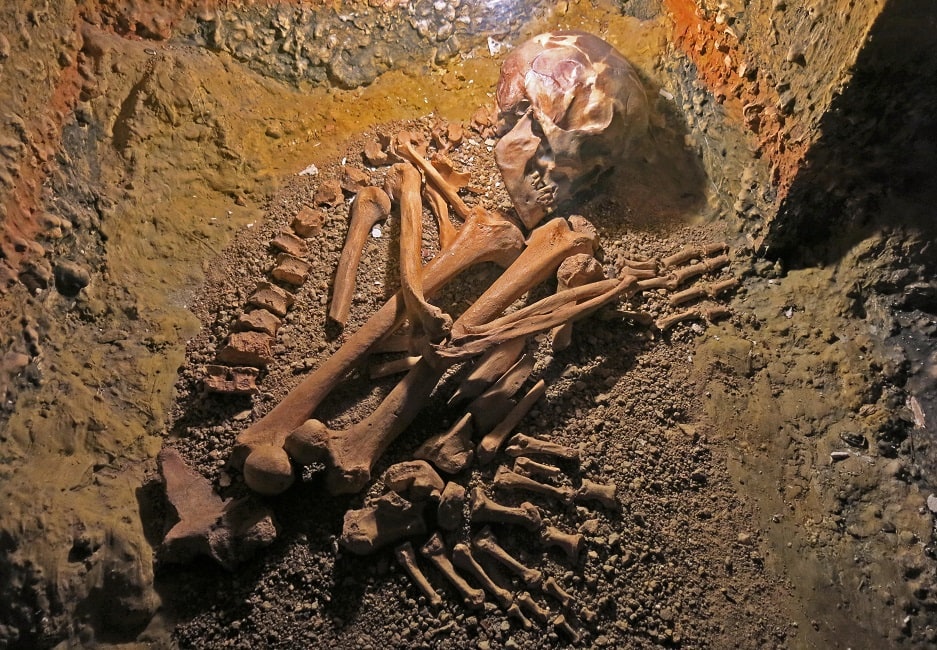
The Chancelade Man was discovered in 1888 in a cave in France. The skeleton was buried just below the surface of the entrance of the cave and it is a near complete skeleton. It is believed that the Chancelade Man lived about 17,000 years ago and was between 55 to 65 years old when he died.
Chancelade Man’s skeleton was found in a sort of curled up position and the corpse was most likely intentionally buried this way. There is also evidence that the Chancelade Man’s corpse was sprinkled with red ochre since the bones are now stained red. Today, the Chancelade Man’s skeleton is housed in the Musée d’art et d’archéologie du Périgord in Perigueux, France.
Did You Know?
In addition to the Chancelade Man, numerous stone and bone artifacts have been recovered from the Raymonden cave, including a pendant depicting bison hunters and their prey, blades, spears, harpoons, and much more.
6. Minatogawa Man
Age: c.20,000 to 22,000 years old
Location: Okinawa, Japan
Gender: Adult male
Year Discovered: 1970

In the late 1960s and early 1970s, four skeletons (two males and two females) were found in the Minatogawa limestone quarry in Okinawa, Japan. The skeletons are near complete and are some of the oldest human skeletons ever found in East Asia. Due to where they were discovered, the skeletons were dubbed Minatogawa Man or Minatogawa people.
Compared to modern Japanese people, Minatogawa Man had a lower and wider skull and was also shorter – 1.55 meters (5 feet 1 inch) for the males and 1.4 meters (4 feet 7 inches) for the females. In addition to the four partial skeletons, bone fragments from a couple other individuals as well as deer and boar bones were recovered from the site.
Did You Know?
According to the archaeologists who originally found the Minatogawa Man bones, Hisashi Suzuki, the individuals might have been killed by enemies who cannibalized their victims and threw their bones in the fissure where the skeletons were recovered.
5. Grimaldi Man
Age: c.22,000 to 26,000 years old
Location: Grotte dei Balzi Rossi, Ventimiglia, Italy
Gender: Adult woman and adolescent male
Year Discovered: 1901
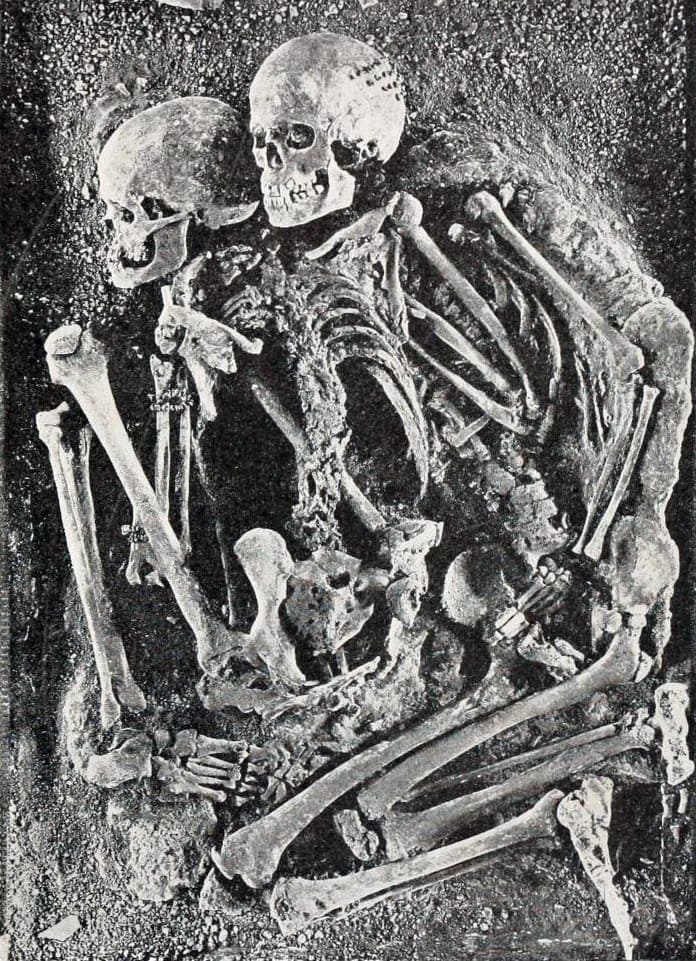
Of all the skeletons on this list, none are more controversial than the Grimaldi Man skeletons. While they have been dubbed the Grimaldi Man, the remains are of two individuals, an adult woman in her 50s and an adolescent male in his late teens.
The skeletons are controversial because they were initially identified as being of African heritage. However, more recent studies suggest that they may not have been black, but they also weren’t Cro-Magnon, the early humans of western Europe. Despite not being able to properly classify the Grimaldi Man skeletons, they have been claimed by the Afrocentrism movement as being black. Additionally, when the skeletons were prepared for display, their original orientation was changed and they now look like they were purposely buried side by side.
Did You Know?
The Grimaldi Man skeletons are some of the most unique discovered in the area. They are more slender than Neanderthals and not quite as tall as Cro-Magnon specimens.
4. Red Lady of Paviland
Age: c.33,000 years old
Location: Paviland Cave, Gower Peninsula, south Wales
Gender: Adult male
Year Discovered: 1823
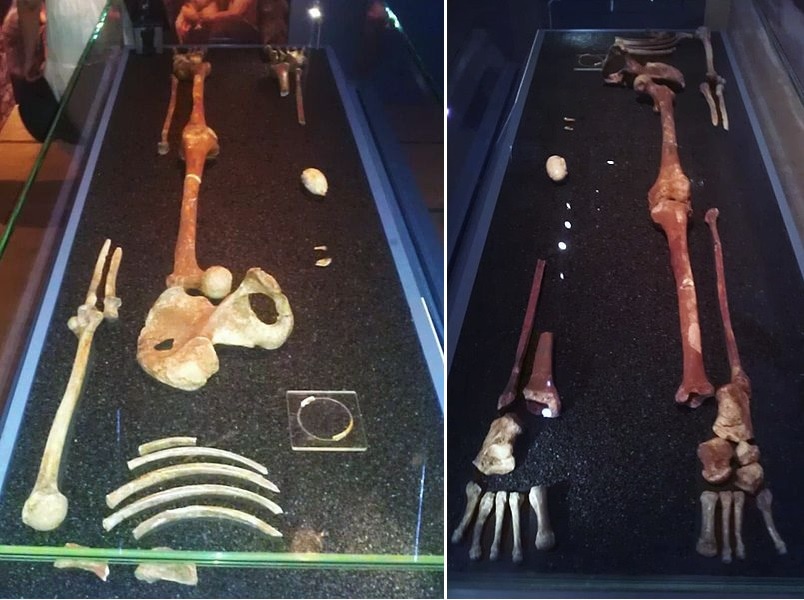
Despite a name that has stuck for over a century, the partial skeleton of the Red Lady of Paviland actually belong to a young adult male. The remains were discovered in 1823 by palaeontologist and clergyman Reverend William Buckland, who thought the bones were from a woman because they had been dyed red. Additionally, Buckland found decorative items like seashell necklaces, which caused him to believe that the skeleton belonged to a Roman witch or prostitute.
However, when the bones were finally properly analyzed with modern technology, it was determined that the Red Lady of Paviland was actually a young man. Also, the bones dated much further back, to about 33,000 years ago. The Red Lady of Paviland is the oldest skeleton unearthed in Britain.
Did You Know?
Like many of the skeletons on this list, the Red Lady of Paviland was very carefully buried, suggesting some type of burial ceremony – this makes Paviland the oldest burial site in western Europe.
3. Balangoda Man
Age: c.37,000 years old
Location: Fa Hien Cave, Kalutara, Sri Lanka
Gender: Adult male
Year Discovered: 2012
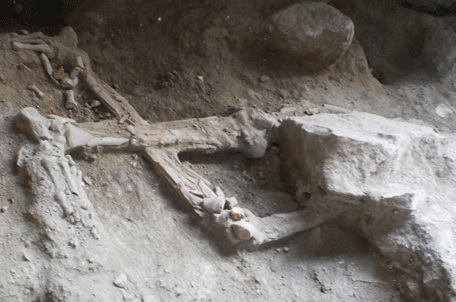
Although the first evidence of Balangoda Man, an early modern human tribe from Sri Lanka, were uncovered in the 1930s, in 2012, a complete skeleton was found in a more recent dig in Fa Hien Cave. Initial reports state that the Balangoda Man skeleton is about 37,000 years old and could possibly be the oldest skeleton ever found in Asia.
In addition to the skeleton, archaeologists found evidence of food items, rituals, and stone tools near the Balangoda Man. While modern Sri Lankan males are only about 5 feet 4.5 inches (163.6 cm) tall, the Balangoda Man was about 5 feet 8.5 inches (174 cm) tall. Balangoda Man also had strong bones, a thick skull, heavy jaws, and large teeth.
Did You Know?
Researchers believe that while Balangoda Man knew how to make fire, they preferred to eat their meat raw and there are some hints that they may have also occasionally participated in cannibalism.
2. Mungo Man
Age: c.42,000 years old
Location: Lake Mungo, New South Wales, Australia
Gender: Adult male
Year Discovered: 1974
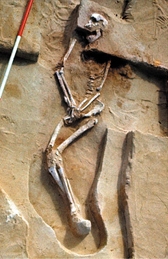
The Mungo Man, scientifically known as Lake Mungo 3 remains, is the oldest human skeleton ever uncovered in Australia. Discovered in 1974, the Mungo Man was one of the most important scientific discovers and was studied for several decades at the University of Canberra. In 2017, the Mungo Man was finally returned to the Aboriginal Australians who now live where the Mungo Man was discovered.
Research showed that the Mungo Man was buried in a complex funeral ritual. The Mungo Man was buried on his back with his hands crossed in his lap, and covered with red ochre. Upon being returned to the Aboriginal Australians, the Mungo Man was buried in a secret location in Mungo National Park.
Did You Know?
The Mungo Man lived a relatively long life for the time period and is estimated to have been around 50 years old when he died.
1. Qafzeh 9 and 10
Age: c.100,000 years old
Location: Qafzeh Cave, near Nazareth, Israel
Gender: Adult female and young child
Year Discovered: 1969
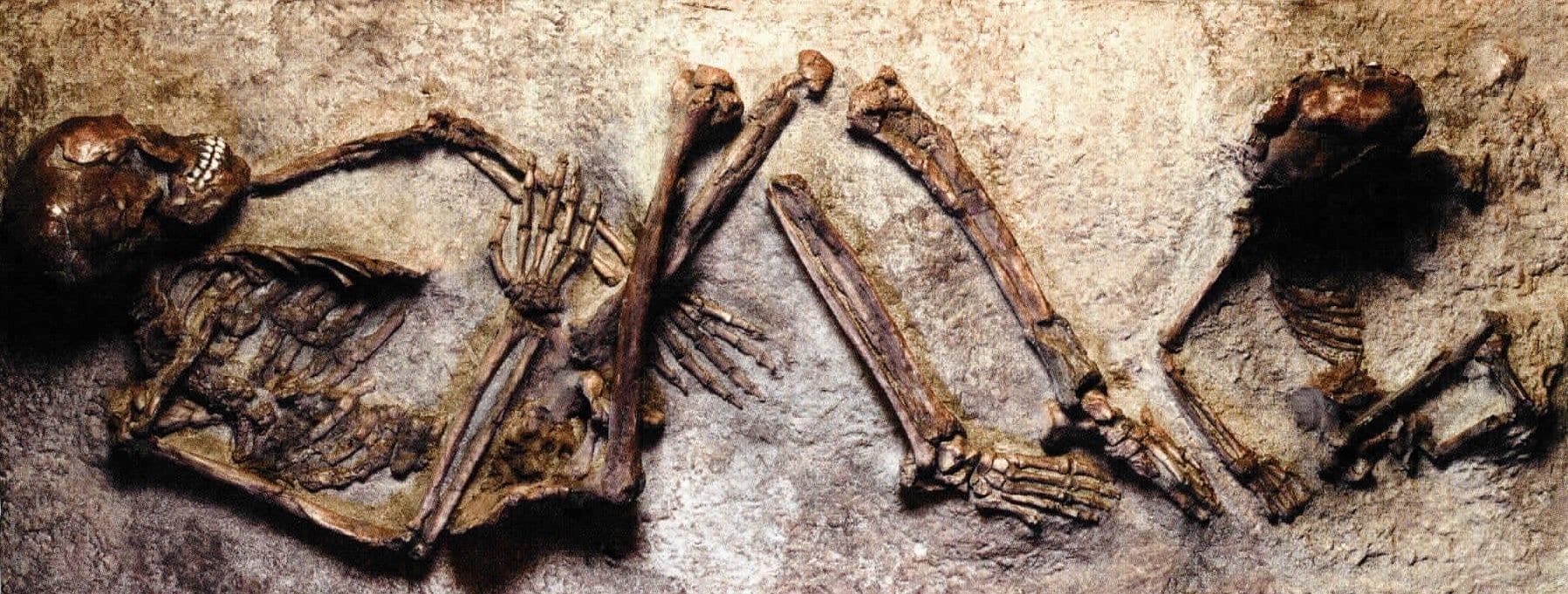
While the Qafzeh 9 and 10 skeletons are not the oldest human (Homo sapiens) remains ever discovered, they are near complete skeletons, making them the oldest human skeletons in the world. The skeletons were discovered in 1969 in Qafzeh Cave in Israel and date back to around 100,000 years ago. Several other human remains were also discovered in the cave.
Qafzeh 9 and 10, along with all of the other remains discovered in the area, look like they were purposefully buried. This is some of the earliest evidence of modern human behavior.
Did You Know?
Qafzeh 9 (a young adult female) and 10 (a young child whose gender has not been determined) are often cited together because the skeletons were placed near one another.


